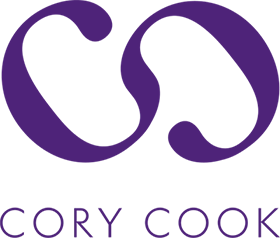When’s the last time you had a really productive work day, where you were unstoppable and leapt tall buildings in a single bound? If it’s been a while, consider some of these tricks below to spruce up the daily grind.
1. Start at COB – Already feeling behind before you reach your desk? A few minutes of forward planning at close of business and you’ll be flying off the starting blocks in the morning. Schedule a daily planning ritual just before the whistle blows to take stock and determine next steps for tomorrow. Adjust your master to-do list or task management software as necessary and make a ‘Hot Card’ (see #4). Finally arrange any needed documents or materials neatly on your desk, in order of attack. Sure, priorities can change overnight, but the process of assembling a preliminary plan will prepare you mentally so you can relax the rest of the evening.
2. Stop Getting Ready to Get Ready – If you properly shut down the night before, your workspace should be in good order. Other than getting some coffee in your cup you should be ready to begin with no delay. If you notice yourself sidestepping with menial tasks before hitting that important document, it could be a sign of procrastination. Set the small stuff aside and head for the real stuff. Just get started and you’ll soon be in the flow.
3. Keep Emails at Bay – We all feel compelled to launch the inbox first thing. Stop! It’s a slippery slope and before we know it “I’m just going to check my emails” has become a two-hour affair. Don’t allow emails to be a constant source of interruption. Where possible, stave off emails for the first good hour of your work day. Use the time to get a head start on something truly worthwhile. Remember, emails come through when it’s convenient for the sender. Avoid looking at emails when you don’t have time to respond, or they’ll steal focus from your current task at hand. Disable email alerts and instead schedule a few processing intervals throughout the day. Use David Allen’s “Getting Things Done” system to sort and manage your email effectively and keep your inbox at zero.
4. Hot Card – Whether you use a notebook or a software program, it’s good to have a master list to hold all your tasks and to-do’s. Working directly from the list, however, can be overwhelming. This is where a ‘Hot Card’ can help. During your daily planning time, extract the top, most important tasks to get done. Think, ‘if nothing else gets accomplished today, I will have done XYZ.’ As you make your selections, affix a time estimate and add them all up. If there’s more tasks than time, trim where it makes sense. You’ll feel more productive at the end of the day when you’ve completed four out of five on your hot card, instead of four out of one hundred on your rolling master list.
5. Monotask – In our fast-paced day, multi-tasking may seem the best defence to keeping on top of it all. The phone rings, an email pings through, we flick in and out of Facebook or Twitter, then get back to writing that proposal before the cycle repeats itself. The issue with all this switching back and forth between tasks, is that with each switch our brain has to reset and refocus on the new activity, as well as where we left off. Each activity will end up taking longer than if we executed it start to finish. Plus, too many unfinished tasks on the go add to our distraction, making it difficult to concentrate on the current task in hand. Take a moment to prioritise each individual task. Place in a numbered order of priority and methodically work through each, one at a time, until complete. You’ll work more concentratedly, get through things quicker and feel more productive as you tick the boxes.
6. Set Timers – Time get can away from us, whether we’re diligently working away on something important or have slipped off-piste on a social media frenzy. Setting frequent timers can help keep us on track and remind us where we are in the day. And it can help us gauge whether we’ve allocated sufficient time for our work. For example, if you planned to write a proposal in 45 minutes when the timer goes and you’re only half-way through, then you can adjust your estimate for next time.
7. Green Breaks – Breaks are important for productivity. Physically and mentally we need to get away from the desk to stretch and recharge so we can keep going. Getting outside is optimal, but if it’s not feasible a quick and effective way to refresh the mind and body is to take a green break. Locate some greenery – could be a leafy plant, trees outside your window, even a picture. Take a few minutes to simply focus on the greenery, take some deep breaths and hydrate with water. The combination is calming yet revitalising and will replenish your alertness to continue.
8. A Day In Review – Think “Groundhog Day” with Bill Murray as you take a few minutes to recount the events of the day. Make mental note of what went particularly well that can be replicated – for example, blazing through an important document during your peak energy time from 9.00 to 10.30. Guard that time daily for similar work. Also identify where you could improve so you can plan strategically tomorrow, e.g. handling interruptions better, not getting carried away with unimportant emails, not waiting for the afternoon lull to start work on that mentally taxing project. The more we pay attention to what works and what can be improved we can make changes that increase and enhance our productivity.
What else works for you? Please comment below!
Thank you for reading. If you enjoyed this post subscribe below to receive our weekly newsletter directly by email.


Comments are closed.